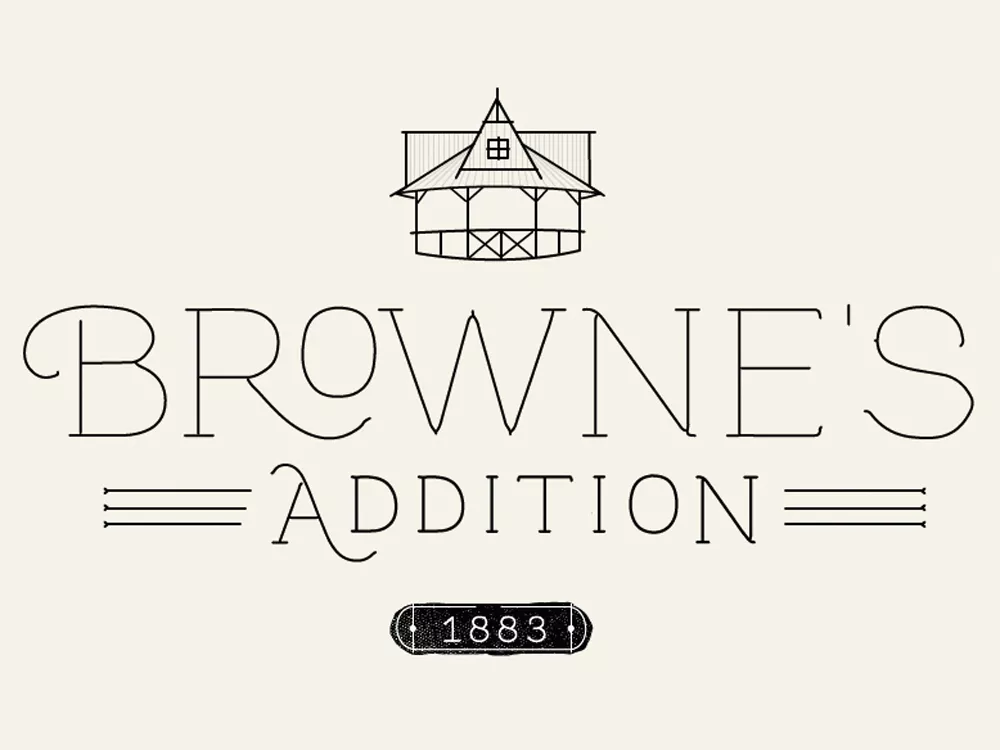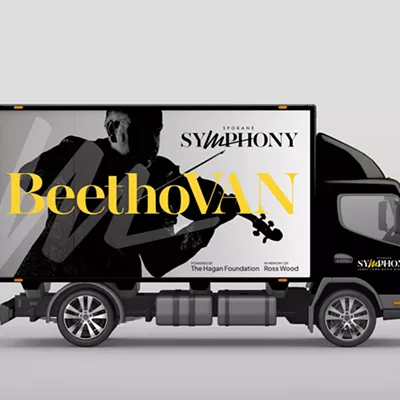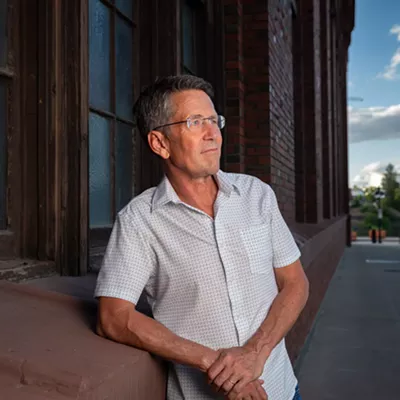Eric Smith moved to Spokane a little over a year ago to take a design gig at a local interactive agency. Karli Ingersoll, a freelance designer, has lived in town her whole life. They both had a similar idea at about the same time.
Smith had come to town not knowing much about the place. A few suggestions and his own research led him to Peaceful Valley, the sliver of land between downtown and the Spokane River. He fell in love. His neighbors threw a music festival on their front lawn that had people milling around in the streets.
“I wanted to do an entire show based around the place,” Smith says. “It’s its own little world down there.”
When Ingersoll bought a house with her husband, the couple ended up near where Ingersoll had spent some of her childhood — a block or two from Corbin Park in the often-overlooked tidal zone between downtown and the North Hill. She remembered the place, but saw it differently as an adult.
“I didn’t realize the character [of the place],” she says. “The neighborhood is more progressive than I’d imagined, and younger than I’d expected.”
We think of communities as places, but they’re really collections of people who come together and, in surprising ways, create a self-reinforcing culture. Joel Barbour, who lives on the mid-South Hill, says he has a hard time keeping up with his neighbors’ immaculate lawns. “I have to get a lawn guy to compete with their lawn guy.”
The idea for The ‘Hoods, a new exhibit of neighborhood-inspired design at Bon Bon this month, was born partly by these designers’ individual experiences of settling into existing cultures, and partly born out of trying to create their own.
Smith, Ingersoll, Barbour, Nick Tibbetts and Jesse Pierpoint — all graphic designers working in various capacities — had begun a semi-regular meetupto get outside the headspace and environment of their offices to share personal work.
“There’s kind of a lack of community in the design community,” Ingersoll says. Everyone works a ton, generally for clients that are outside Spokane. They want to bring designers together, she says, eventually forming a larger arts collective.
At these meetings, talk turns to stories about the designers respective neighborhoods and the various structures — from the width of the streets and the distance from the core to the quirks of individual residents — that shape them.
Barbour grew up in Hillyard. “When people who aren’t from Hillyard say Hillyard has changed, I think, they’re only driving down Market.” he says. “I go to my old neighborhood and the neighborhood is the same. The skatepark is the same. It’s the same old rentals.”
Still, with each bit of revitalization comes hope. “The new high school is amazing,” Barbour says, and everyone around the table agrees. “People have a sense of pride about the place.”
Barbour says when he thought about his design for Hillyard, he considerd both the hard history and the new hope. As for a logo for the South Hill, his current home, he smiles, “what do you think about something with, like, a dollar sign?”
The ‘Hoods is not an attempt to officially brand anything, but to represent with design a cohesive yet personal vision of the places each designer loves. “We’re creative people and we’ve chosen to live here,” Ingersoll says. “We’re not afraid to tell Spokane we like it.”
And though the intent is all love, she’s caught a little flack from her neighborhood council. “They said the neighborhoods I picked aren’t actual neighborhoods,” she says, with a smile that’s a half-wince.
Garland, illustrated in a looping font like a single stroke of a paintbrush, isn’t a neighborhood unto itself. It’s a part of North Hill. Corbin Park, likewise, is a part of Emerson-Garfield.
The park is seen by some of Ingersoll’s neighbors as an upper-crust enclave of a more depressed area, and an island unto itself. Branding a place means navigating decades of community politics and history. Ingersoll says she’s sticking with Garland and Corbin Park because that’s how she understands the neighborhood. “Everyone says ‘we’re going to Garland,’” she says, “nobody says ‘North Hill.’”
In the end, the designers welcome a little controversy. They say they’re hoping to draw Spokane into a conversation about itself.
That conversation may or may not come with some swag. When Eric Smith took the idea for the show to his neighbors, they told him to merchandise.
“My neighbors said, ‘we want shirts, we want stickers. We want to support this thing,’” he says.
The ‘Hoods Artist Reception, part of First Friday events around Spokane • Sept. 7 at 7 pm • Bon Bon • 924 W. Garland • 413-1745 • thehoodsproject.com
















